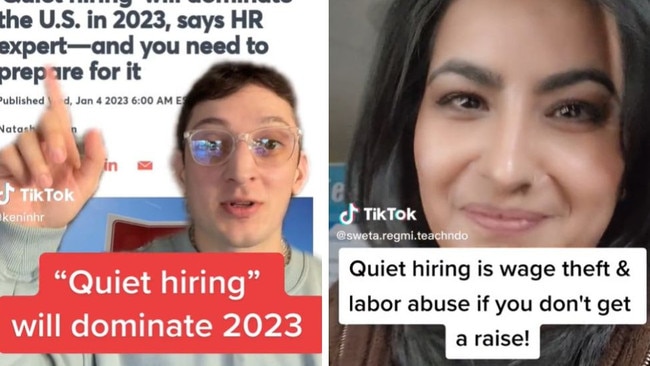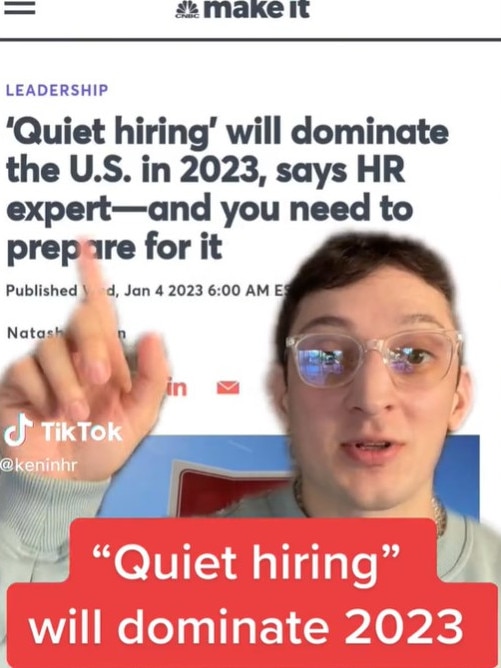Quiet hiring: The workplace trend young workers are rallying against
Hot off the heels of quiet quitting, a new trend has emerged in Aussie workplaces - and it’s got young workers outraged.

At Work
Don't miss out on the headlines from At Work. Followed categories will be added to My News.
Hot off the heels of “quiet quitting,” the new workplace trend of “quiet hiring” has emerged as employees struggle to backfill roles and attract new staff.
On TikTok, Gen Z and millennial workers say the new trend could lead to burnout and increased workloads without the financial payoff.
HR coach and workplace TikTokker KeninHR, said the practice was used by businesses to “acquire new skills” by shuffling existing employees or hiring contract employees to fill a vacant position.
“People are upset because they see this as companies paying people the same or less for more work,” he warned.
“If this happens to you, you should be compensated for going above and beyond and delivering high quality work.”


Popular TikTok career expert, Sweta Regmi labelled the new trend as “wage theft”.
“Quiet hiring is wage theft and labour abuse if you don’t get a raise,” she wrote in a TikTok video.
However some recruitment experts believe the trend is a direct response to employers’ hiring difficulties and gaps that need to be filled by existing staff.
Director of global recruitment firm Robert Walters, Jane Lowney told NCA NewsWire: “As a recruiter who supports companies looking to hire people, there is absolutely no shortage of appetite to hire people.
“I think it’s inevitable in a short market that there may be an expectation for people to take on a bit more work if that’s what the business needs for a period of time.
“But that doesn’t mean they’re not recruiting to replace that role or to add additional heads. I think it’s just taking people longer than they anticipated.”

Although Ms Lowney has seen the increase of casual work – in which people hire freelance and temporary staff on a non-permanent basis – she believes it’s more of a temporary resourcing measure.
“We certainly are seeing clients who traditionally would have hired people on a permanent basis, being open to hiring them on a temporary contract basis, if that’s the only way they can get a resource,” she adds.
How to use it to benefit you
While increased workloads are a top concern, Ms Lowney says there is a silver lining to taking on work outside of your defined role.
“If you’re looking at your own skill set critically, and you’re looking at where you want to get to, often those who are most ambitious will put their hands up for more work if they’ve got a gap in order to really give themselves that rounded capability,” she says.

However, Ms Lowney stresses that the “what’s in it for me question is important”.
“Ask these questions first: ‘Is this expanding my skill set? Will I be doing something that I wouldn’t ordinarily do? What does this look like in six months time when I finished this project, and has it added value to my career aspirations?’” she adds.
“If it’s a yes to those questions, then 100 per cent grab the opportunity.”
When it comes to most social media driven employment trends, like quiet quitting Ms Lowney views them with a raised eyebrow.
She believes that while there may be a generational gap that assumes “the company is always there to do the wrong thing by you,” she says it also reflects a hesitancy younger workers have with communicating with their employers.
“They’re observing something happening, but they’re not comfortable enough with challenging or asking why that may be. Instead they’re labelling it,” she says.
“If you think this is happening in your business, have the conversation. Ask when it is going to be resolved.
“I think we’re shying away from having those conversations.”
Originally published as Quiet hiring: The workplace trend young workers are rallying against


